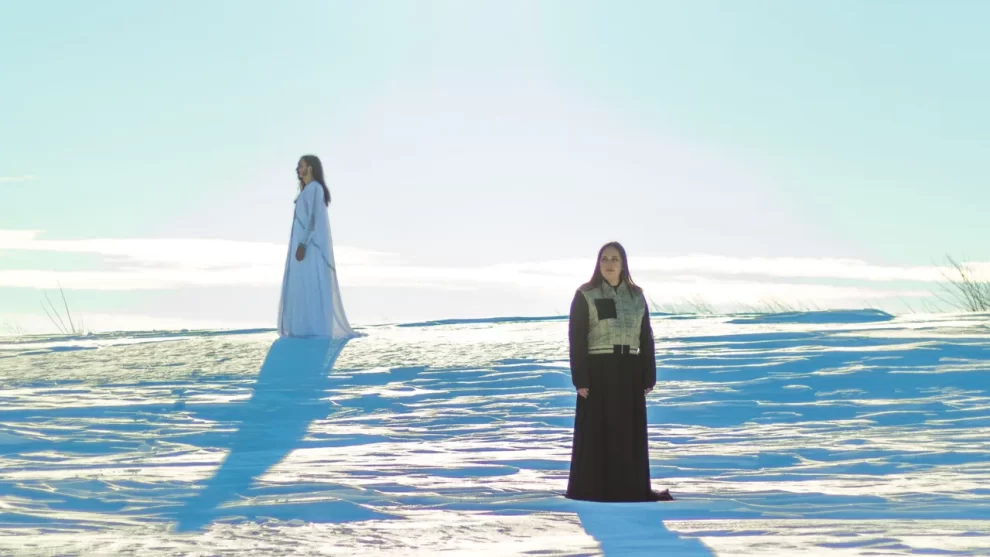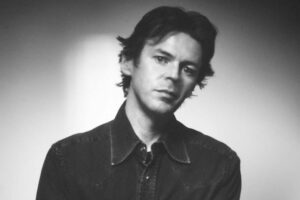Organized by Indigenous Fashion Arts founder Sage Paul, six Indigenous designers from Canada showcasing during MFW: Lesley Hampton; Erica Donovan (She Was a Free Spirit); Evan Ducharme; Justin Louis (Section 35); Robyn McLeod; and Niio Perkins.
Paul launched Indigenous Fashion Arts in 2018, a biennial Fashion Week in Toronto that provides Indigenous designers with a much-needed platform to showcase their work. She is responsible for organizing the group of designers together, with added support from the Canada Council for the Arts, the Department of Canadian Heritage, and the Canadian Embassy. In Italy, the group will showcase their work as part of White Milano—a luxury trade show running from February 24 to February 27. It’s a prime opportunity for the artists to meet with international press and buyers. “It’s a trade show centered around luxury—items that are more about craftsmanship and creativity,” says Paul. “Of course, that aligns with what we do.”
The designers offer a diverse glimpse into the Indigenous fashion community, from the traditional to the unconventional. “We really wanted to make sure that there was representation of the three umbrellas of Indigenous people [in Canada]: First Nations, Inuit, and Métis,” says Paul. “It’s a strong representation of what it means to be Indigenous.” Labels like Evan Ducharme (Métis) and Section 35’s Justin Louis (Cree) are offering contemporary takes on traditional Indigenous motifs, whether it be woven dresses or bomber jackets. Robyn McLeod (Dene/Métis) and Niio Perkins (Mohawk) specialize in more traditional styles of beadwork and jewelry.
While they range in aesthetics, Paul says they’re unified by a strong sense of identity. “Everyone feels very strongly in how they express their Indigeneity,” says Paul. “We get to show a big scope of what it is to be Indigenous, and what people are making and wearing.”
Compared to showcasing their new collections on the Milanese runways, Paul says there’s a certain power in going the trade show route. “There’s more time to build relationships,” says Paul. “Doing a show is a huge amount of work and it’s a huge expense; At trade shows, people are there specifically to buy.” Paul hopes to foster the designers in more of a business sense, giving them an opportunity to network and sell their work to prospective new clients.
In tandem with the White Milano showcase, Paul and the designers will also be engaging in a special panel discussion at the event. They hope to educate buyers and attendees about Indigenous fashion, and to introduce them to some of the core design values within the community (sustainability, and designs rooted in heritage, come to mind). “They don’t know much about our communities [in Europe],” says Paul, “so there’s a lot of education to be done around understanding what fashion is from Indigenous communities, and how to work with Indigenous people.”
They hope to touch on cultural appropriation specifically—sharing what’s appropriate for non-Indigenous people to wear. “I’m really hoping that people can see that, yes, everyone can wear this,” says Paul. “It’s more about making sure you do your research, and asking yourself: Was this Indigenous made?”
While North American platforms like Indigenous Fashion Arts, the Santa Fe Indian Market, and Vancouver Indigenous Fashion Week have all provided Native designers a moment to shine, having an Indigenous fashion presence during the European Fashion Month calendar is a next big step in terms of representation. Paul simply wants Native artists to thrive in an industry that’s often made it difficult to do so. “This idea of being ‘market ready’ is typically for those who are making huge quantities, and a lot of people in our communities are not doing that,” says Paul. “I see a lot of people in fashion just drop out. So how do we change that perspective, and [outline] the steps to advance your career and your work. I see huge potential there.”
Source: Vogue






















